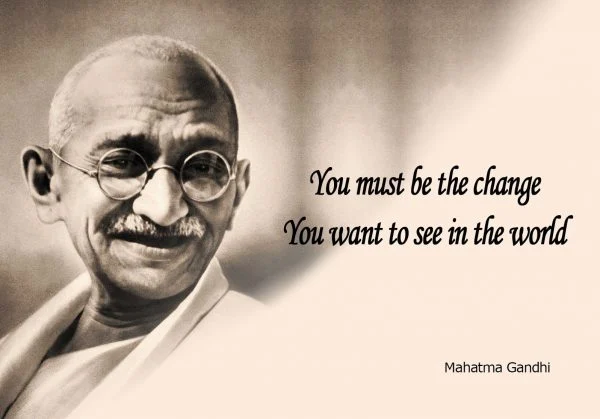I once walked onto a floor that felt heavy. People were at their desks, keyboards were clicking, but the energy was gone. It was a team of zombies, physically present but mentally and emotionally checked out. The spark was missing, and it was dragging down their results, their creativity, and their well being. In that moment, I realized that the most important, unofficial title a leader holds is that of Chief Motivational Officer.
Motivation isn’t about giving rah rah speeches or buying pizza on Fridays. It’s the invisible engine that drives a team forward. It’s the difference between employees who simply do their jobs and those who own their work, innovate, and push beyond what they thought possible. For any organization, fostering this environment isn’t just a nice to have; it’s the ultimate competitive advantage.
So, how do you become that leader? How do you build a team that runs on passion and purpose? It begins not with action, but with understanding.
The Real Engine: Unpacking the Psychology of Motivation
Table of Contents
Before we jump into the steps, we need to understand what truly drives people. Motivation isn’t a single switch you can flip. It generally falls into two categories.
Extrinsic motivation comes from the outside. Think salary, bonuses, promotions, and perks. These are important, yes, but they are also temporary. A bonus motivates someone for a short time, but it rarely inspires long term loyalty or passion. Over reliance on these factors can even diminish the deeper, more powerful source of drive.
Intrinsic motivation is the magic ingredient. It comes from within. It’s the satisfaction of solving a complex problem, the pride in mastering a new skill, or the feeling of contributing to something meaningful. This is the sustainable, powerful fuel that creates high performing, engaged teams. It’s built on three core pillars: autonomy, mastery, and purpose. At the base of it all lies one critical element: psychological safety. Without a foundation where people feel safe to speak up, take risks, and be themselves, true motivation can never take root.
Also read: How Leaders Can Foster Psychological Safety at Work
Becoming a motivational leader means focusing less on the carrots and sticks and more on creating an environment where this inner drive can flourish. Here are ten powerful steps to help you do just that.
1. Connect to a North Star: The Power of a Shared Vision
People don’t want to just lay bricks; they want to build a cathedral. It’s my job as a leader to make sure they see the blueprint. When a team understands the “why” behind their work, their daily tasks are transformed from a checklist into a mission. A powerful, shared vision gives work meaning.
Take the time to co-create this vision with your team. Don’t just present it. Discuss it, debate it, and make sure everyone feels a sense of ownership over your collective goal. Constantly connect individual contributions back to this larger purpose, showing each person how their specific role is critical to the mission’s success.

2. Build a Safe Harbor: Fostering Psychological Safety
Imagine a team where no one asks questions for fear of looking incompetent. Or where everyone agrees with the leader, even when they see a flaw in the plan. This is a team operating without psychological safety, and it is a motivation graveyard.
I actively work to create an environment where vulnerability is a strength. I admit my own mistakes openly. I encourage questions and celebrate respectful debate. I make it clear that failure is not an outcome to be punished but a data point to learn from. When people feel safe, they bring their whole, creative, and innovative selves to work. This is the bedrock upon which all other motivational efforts are built.
3. See Them, Acknowledge Them: Master the Art of Recognition

A simple, heartfelt “thank you” can be more powerful than a bonus. People want to know that their hard work is seen and valued. As a leader, I make recognition a consistent practice, not a rare event.
The key is to be specific and authentic. Instead of a generic “good job,” I’ll say, “The way you handled that difficult client call with such patience and empathy was exceptional. It made a real difference.” Recognition can be public, like celebrating a win in a team meeting, or private, like a personal note. The medium matters less than the sincerity of the message.
Also read: Perks Aren’t Enough: 3 Secrets to Winning at Employee Engagement
4. Hand Over the Keys: Empowering Through Autonomy
Nobody likes being micromanaged. It screams a lack of trust and stifles creativity. One of the greatest gifts I can give my team is the freedom to own their work. I define the “what” and the “why,” but I give them as much autonomy as possible to figure out the “how.”
This doesn’t mean I abdicate responsibility. It means providing the right resources, being available for guidance, and then stepping back to let talented people do what they do best. Empowering your team with ownership is a direct message that you trust their competence and judgment, which is a massive intrinsic motivator.
5. Be the Compass, Not the Map: Coach for Growth

A manager directs, but a motivational leader coaches. My goal isn’t just to get the job done today; it’s to help my team members become better, more capable professionals tomorrow. I see their potential and actively invest in their growth.
This involves having regular conversations about their career aspirations, identifying opportunities for them to learn new skills, and providing constructive feedback that helps them improve. When people see a clear path for development within the organization, their engagement and motivation skyrocket. They feel valued not just for their current output, but for their future potential.
6. Champion Radical Transparency: Communicate, Communicate, Communicate

In the absence of information, people tend to assume the worst. Uncertainty is a major source of anxiety and a killer of motivation. That’s why I am a firm believer in being as transparent as possible.
I share business updates, both good and bad. I explain the reasoning behind major decisions. I create regular forums, like town halls and Q&A sessions, where people can ask questions and get honest answers. This open dialogue builds trust and makes everyone feel like they are a valued part of the journey, not just a passenger.
Also read: Clear Communication: The Key to Unlocking Success in the New Year
7. Walk the Talk: Lead from the Front

I can’t expect my team to be positive, hardworking, and resilient if I’m not demonstrating those qualities myself. A leader’s energy is contagious. If I show up every day with passion, optimism, and a commitment to excellence, it sets the tone for the entire team.
This means rolling up my sleeves and helping out when the team is under pressure. It means staying calm during a crisis. It means celebrating our values through my own actions. My team is always watching, and my behavior is the most powerful message I can send.
8. Beyond the Boardroom: Forge Genuine Connections
A team that plays together and knows each other as people, not just colleagues, is a more cohesive and motivated unit. I make it a priority to create opportunities for genuine human connection.
This can range from structured team building activities to simply starting meetings with a non work related check in. We celebrate birthdays, personal milestones, and our shared successes. Building these social bonds creates a strong support system and a sense of belonging, making work a place people want to be.
9. Guard Their Energy: Champion Well being
An exhausted, burnt out team is an unmotivated team. In today’s always on work culture, it’s my responsibility as a leader to protect my team’s well being.
This means actively encouraging them to take their vacation time, respecting their personal hours, and promoting a healthy work life balance. I also keep a close eye on workloads to ensure they are challenging but manageable. A well rested and healthy team is a team that has the energy to stay engaged and perform at its best.
Also read: 21 Micro Habits to Improve Wellness
10. Tune In: Understand What Makes Each Person Tick
Motivation is not one size fits all. What drives one person may not drive another. One team member might be motivated by public recognition, while another might be energized by the opportunity to work on a challenging solo project.
I make it my business to understand the unique motivators of each person on my team. Through one on one conversations and careful observation, I learn about their goals, their passions, and their working styles. This allows me to tailor my approach, providing the right support and opportunities to help each individual thrive.
Putting It into Practice
I once inherited a team that was stuck in a rut. They were meeting their targets, but just barely. There was no excitement, no new ideas. I spent my first month just listening. I learned that they felt disconnected from the company’s mission, were afraid to suggest new ideas after a previous project was shut down harshly, and felt they had no control over their work.
Using these steps, I started by re connecting their work to our customer impact (our North Star). Then, I instituted “Failure Fridays,” where we shared things that didn’t work and what we learned, building psychological safety. I gave them control over a small project, providing full autonomy. Within three months, the energy had completely shifted. The team was not only hitting its goals; they were smashing them. They were a team reborn.
A Takeaway for Those Who Build Leaders
For my friends and colleagues in Learning and Development and HR, our role is crucial. We are the architects of the systems that empower leaders to be these motivational officers.
A manager’s ability to motivate is not an innate talent; it is a learned skill. Our leadership development programs must go beyond teaching process and policy. We need to create experiences that build empathy, enhance coaching skills, and teach leaders how to cultivate psychological safety. By investing in developing motivational leaders, we create a ripple effect that boosts engagement, retention, and performance across the entire organization.
Building a motivated, high performing team is a continuous journey of learning, listening, and leading with humanity. It’s the most challenging part of leadership, but it is also, by far, the most rewarding.
If you are looking to develop motivational leaders and build a culture of engagement within your organization, explore the impactful FocusU programs.










